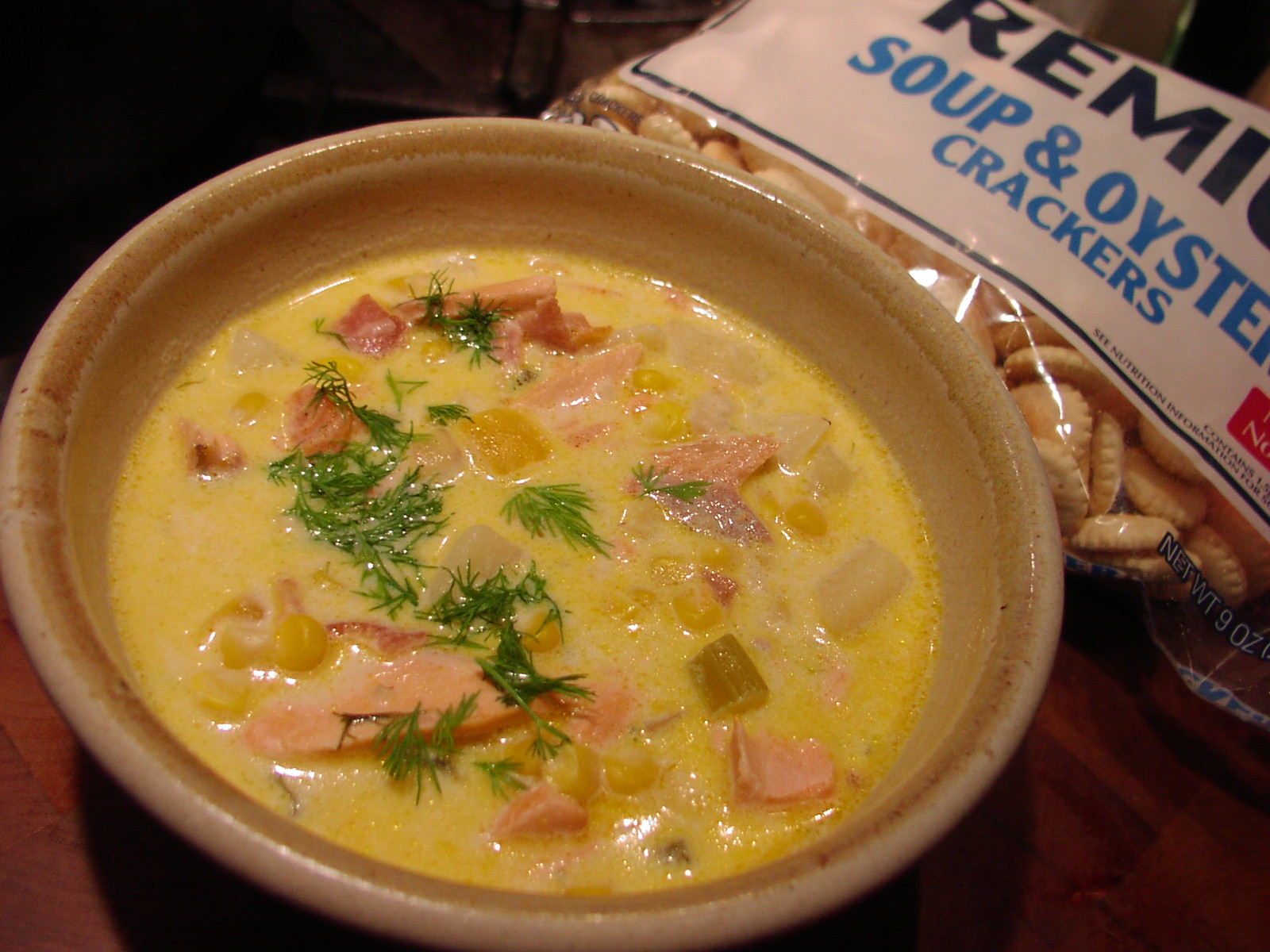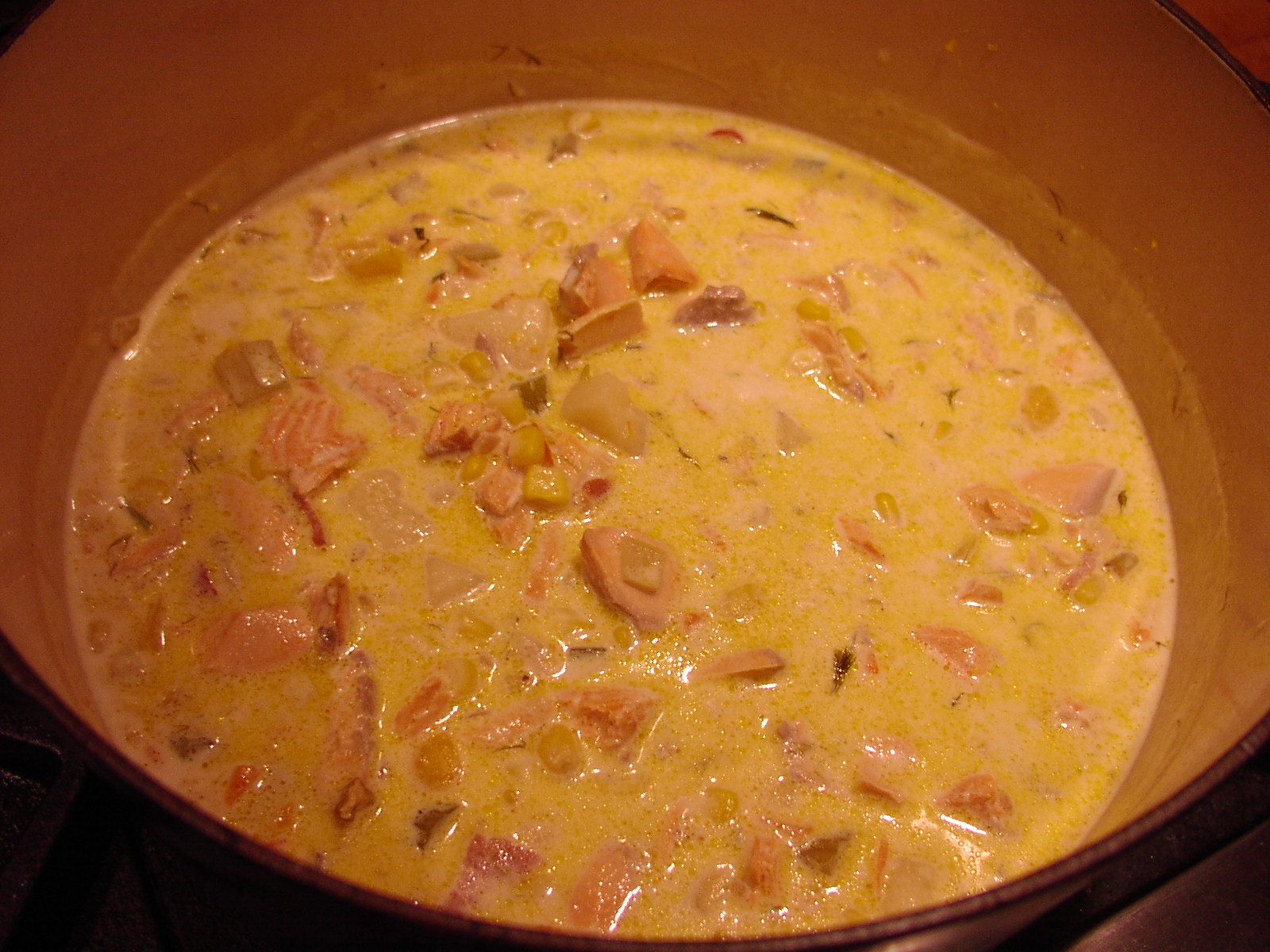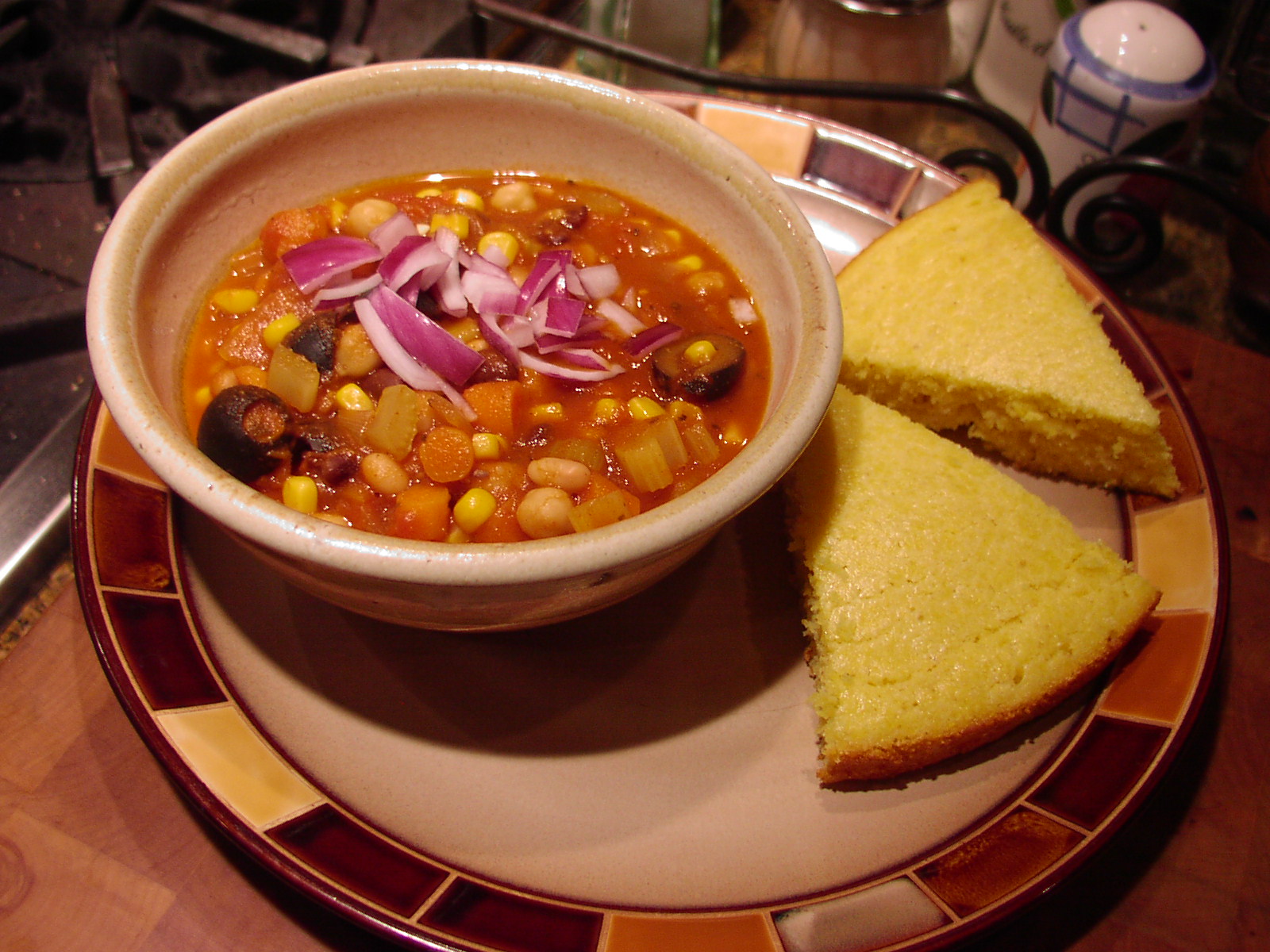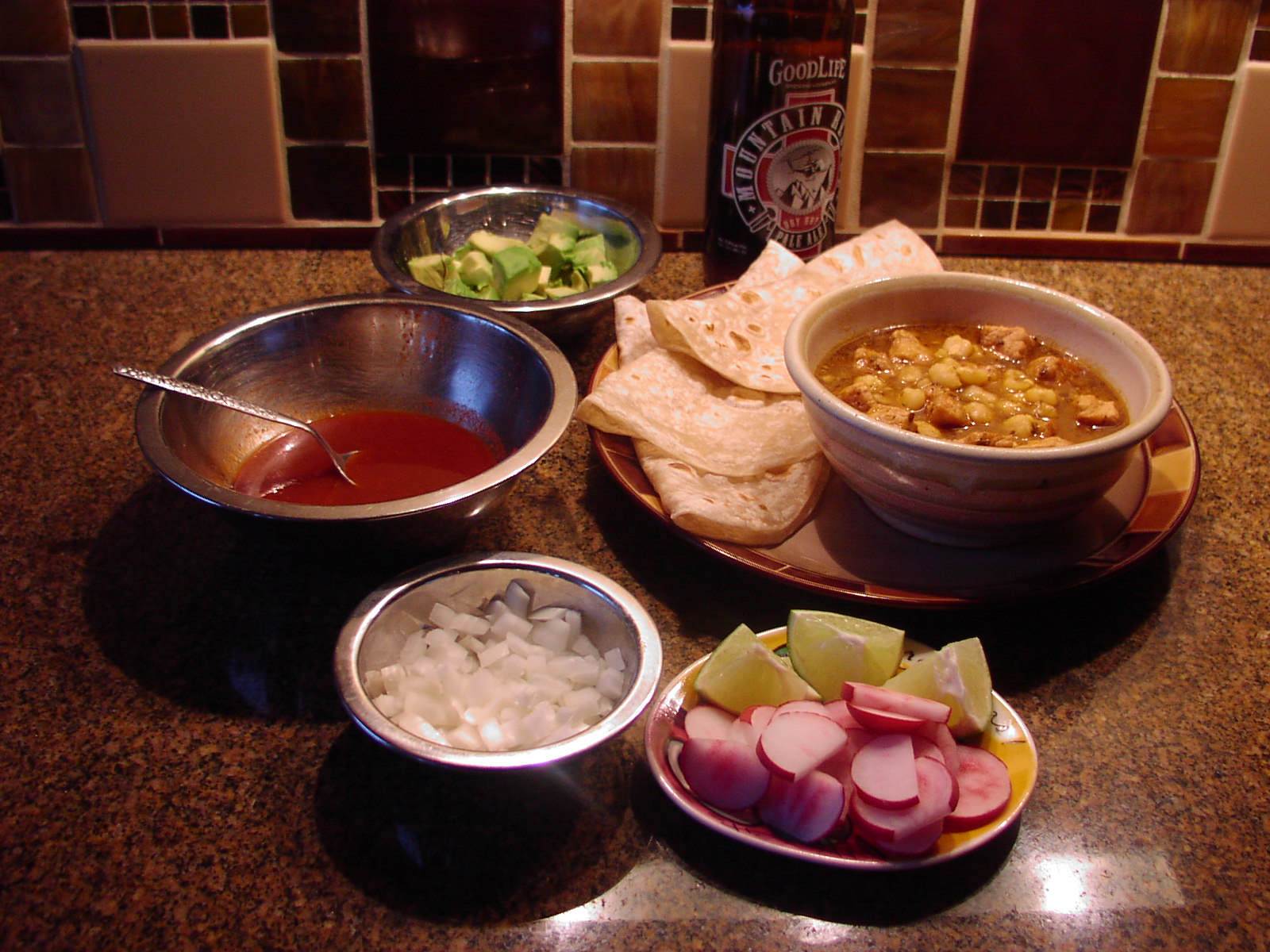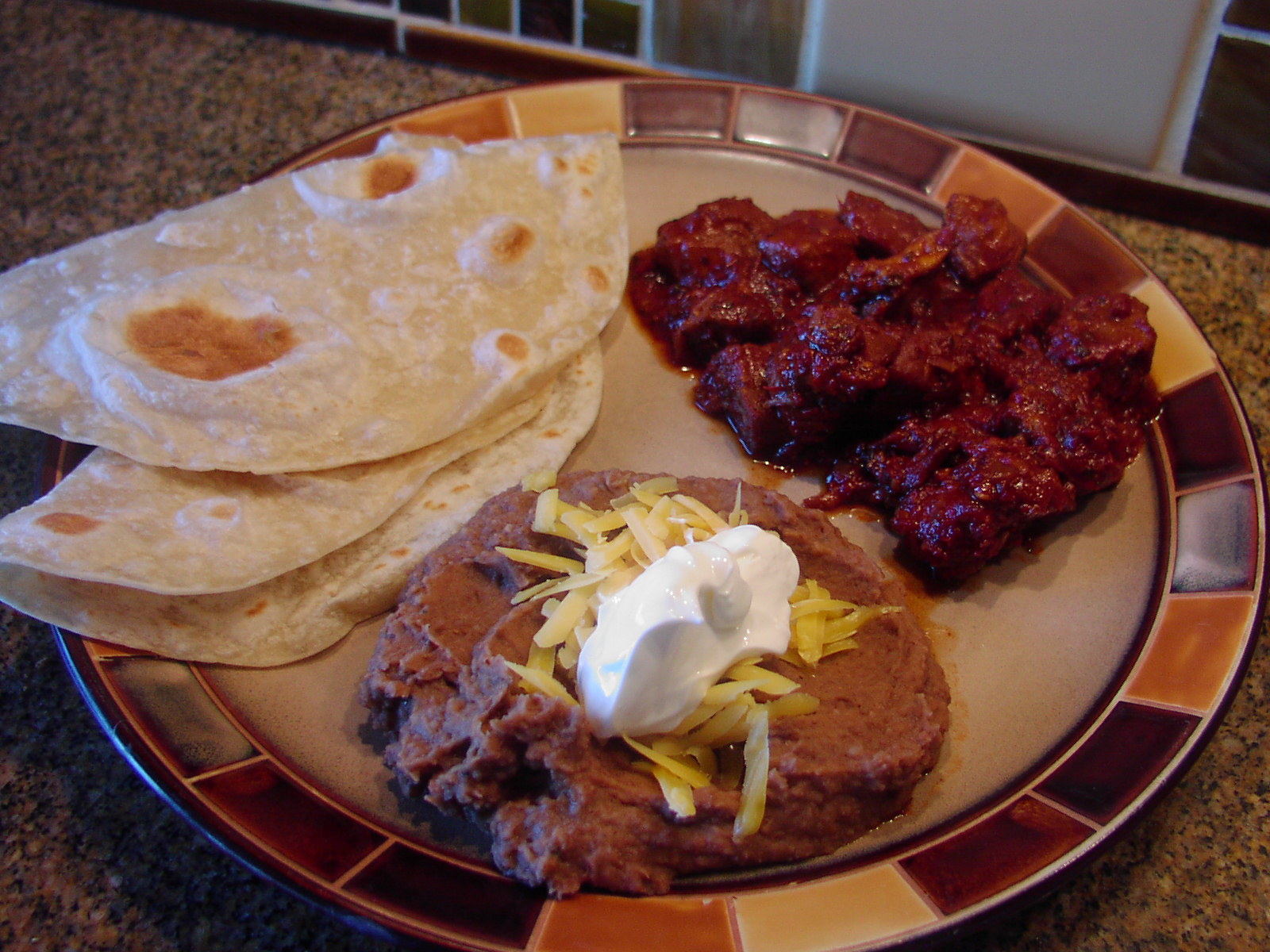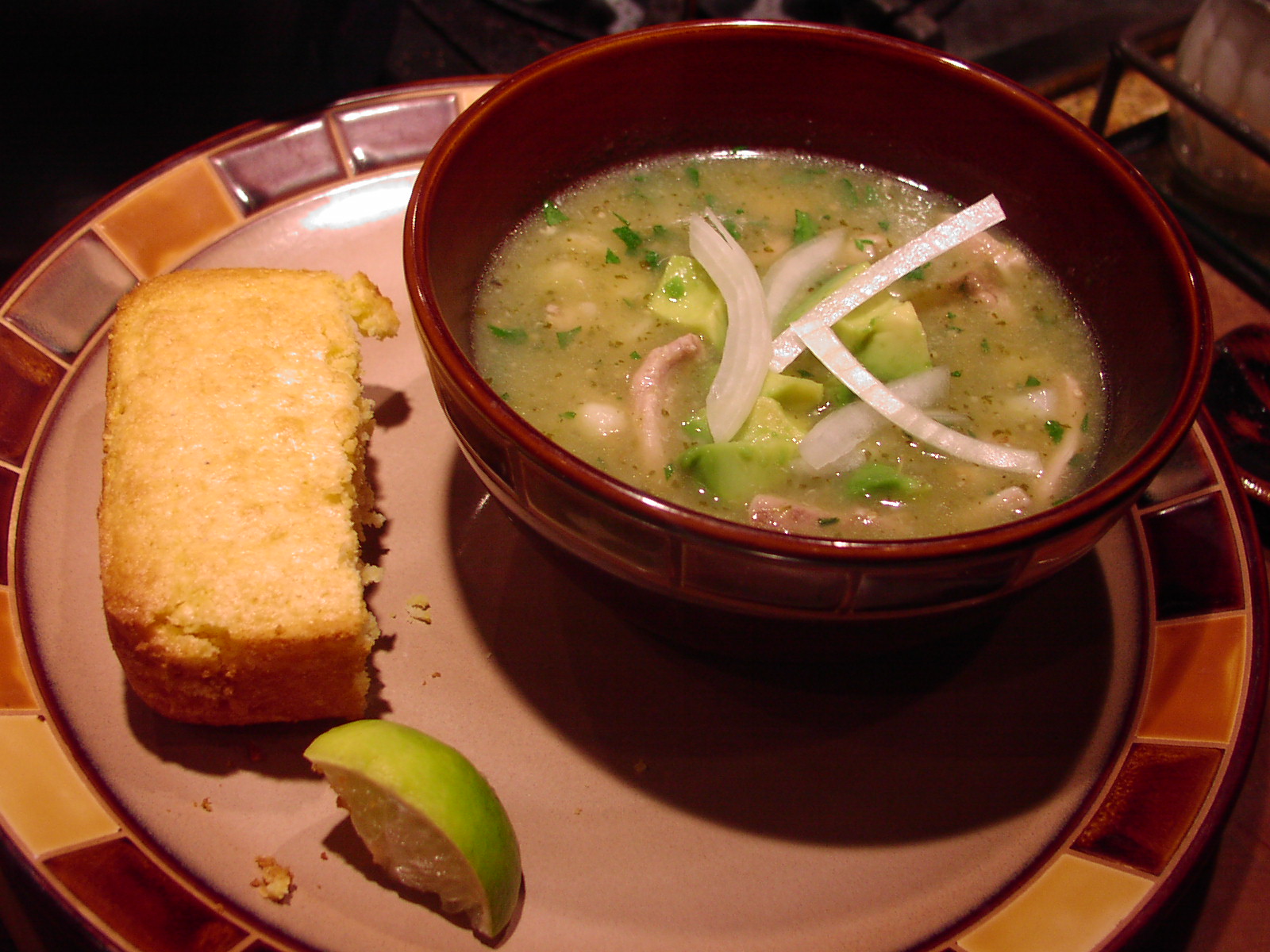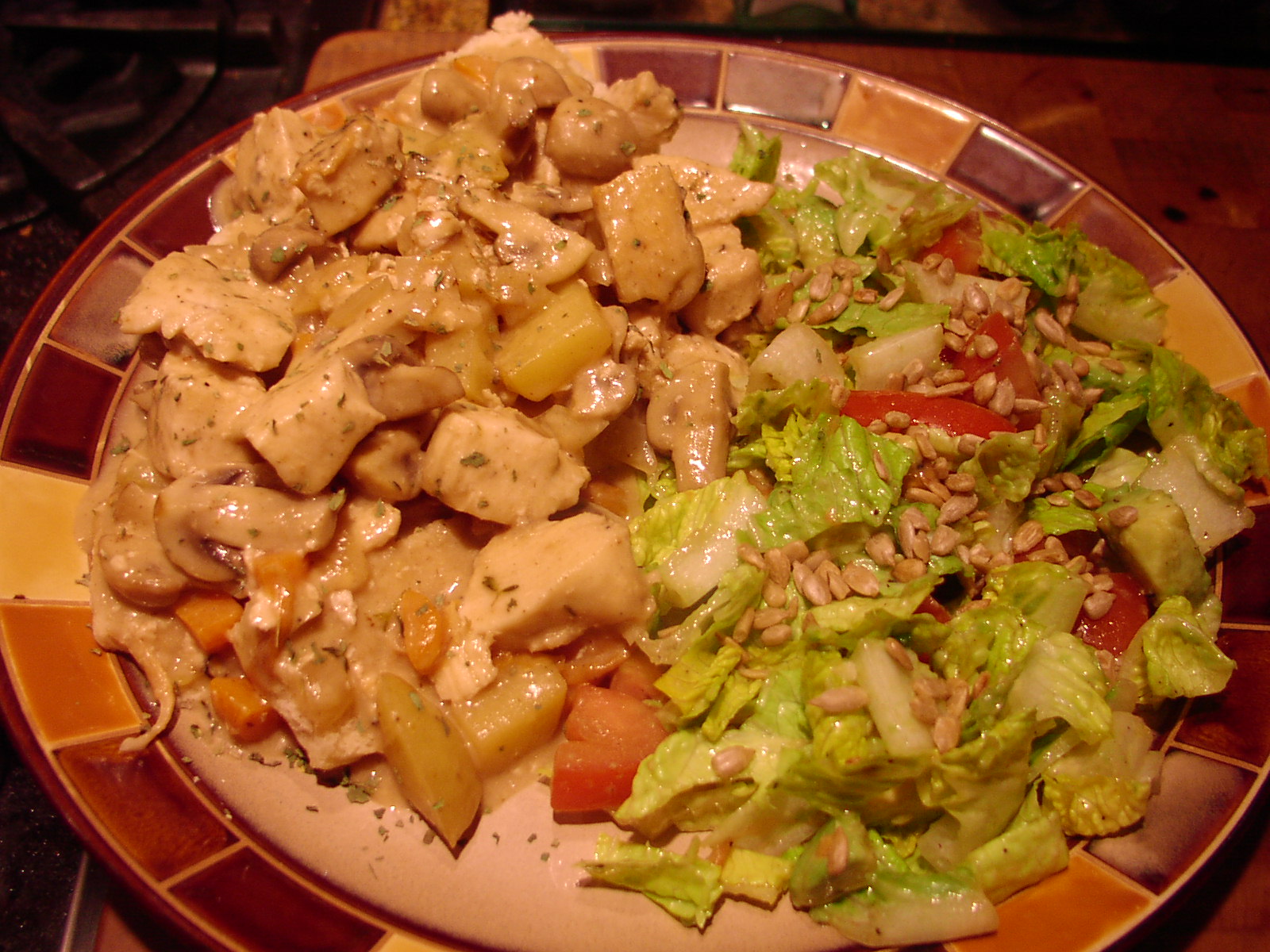Yesterday morning Mr. C. reminded me that we had 2 small salmon fillets in our freezer that were not only looking lonely, but fast becoming past their prime. (Aren’t we all!) So never being one to ignore such a gentle yet sinfully correct hint, I decided to figure out a way to prepare the salmon in a new and exciting way. And not coincidentally, use up a few other aging ingredients (half a red pepper, fresh dill, open container of chicken stock) before they too became unredeemable.
Before Mr. Cs suggestion that the salmon was fast becoming an endangered species, I had already planned to fix some kind of soup for dinner. We had been gone several evenings in a row, and what I really yearned for (and truly needed) was a simple home cooked dinner and an early intimate rendezvous with my pillow.
So I decided to stick with my original plan to make soup for dinner. I had eaten smoked salmon chowder before, but had found it a bit rich. And the last thing I wanted last evening was an over the top rich dinner. So I started with a standard creamy chowder base and added poached salmon pieces right at the end. I knew I had to be careful not to make the soup part so flavorful that the delicate taste of the salmon would be overpowered. I wanted the base soup to enhance the flavor of the salmon, not detract from it.
So this is my take on a quick and easy to prepare fresh salmon chowder. I hope you enjoy it. And don’t forget the oyster crackers. They are just so darned cute, and crunchy to boot!
- 3 slices lean, thick-cut bacon, diced
- 1 T. butter
- ½ c. chopped onion
- ½ c. chopped celery
- ½ c. chopped red pepper
- ½ c. shredded carrot
- 1 garlic clove, minced
- 2 c. chicken broth
- 1 lg. Yukon gold potato, peeled and diced
- ½ tsp. kosher salt
- freshly ground black pepper
- 1½ tsp. finely chopped fresh dill or ½ tsp. dried dill weed + more for garnish
- 1 can whole kernel corn, drained
- 2 c. half-and-half
- 1 T. cornstarch
- 1¾ to 2 c. fully cooked salmon chunks (left-over salmon is perfect in this chowder)
- oyster crackers, opt.
In a large covered soup pot, fry diced bacon until crisp. Remove from pan and drain on paper towels. Set aside. Add butter to the pan (don’t remove bacon fat) and add the onion, celery, red pepper, and carrot. Cook just until the onion is translucent, about 5 minutes. Add the garlic and cook for one minute. Add the chicken broth, potato, salt, pepper, and dill; bring to a boil. Reduce heat; cover and simmer for 20 minutes or until the potato is fork tender. Stir in the corn and the half-and-half that has been whisked together with the cornstarch. Slowly bring to a boil, reduce heat and simmer for 3-4 minutes or until thickened. Add the salmon chunks and reserved bacon and simmer until heated through. Adjust seasonings.
Serve garnished with fresh dill. (Oyster crackers on the side are delightful.)

